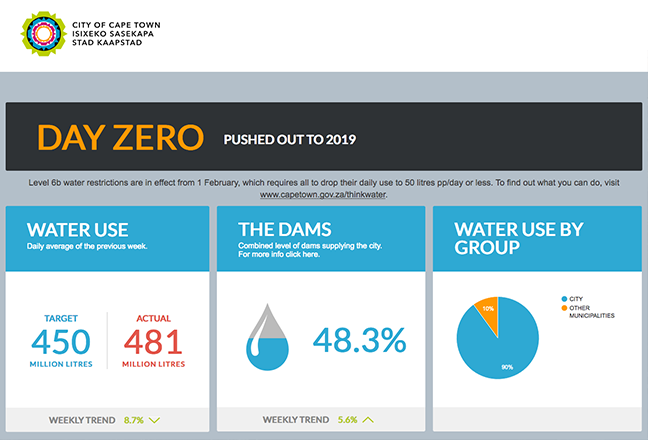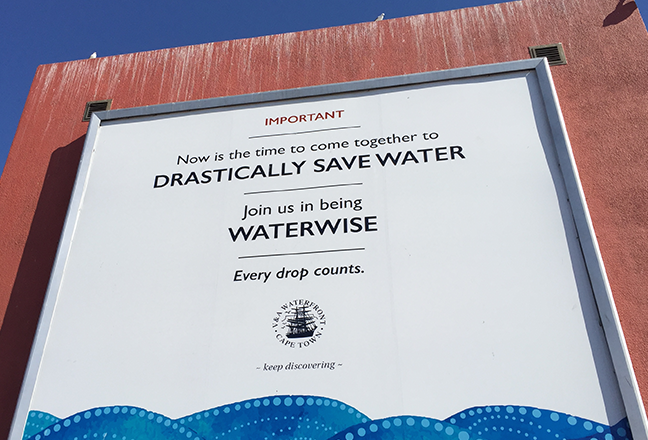Home / Nature & Environment / Climate Change / The Challenge of Global Water Security / Water savings in Cape Town

Reach your personal and professional goals
Unlock access to hundreds of expert online courses and degrees from top universities and educators to gain accredited qualifications and professional CV-building certificates.
Join over 18 million learners to launch, switch or build upon your career, all at your own pace, across a wide range of topic areas.


 Public art encouraging water saving at V&A docks – Photo by A. Healy
Public art encouraging water saving at V&A docks – Photo by A. Healy
 Key data shown in a ‘Water Dashboard’ which is available to the public
Key data shown in a ‘Water Dashboard’ which is available to the public
 Billboard in Cape Town advocating water saving – Photo: A. Healy
Billboard in Cape Town advocating water saving – Photo: A. Healy







